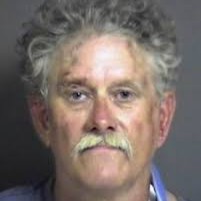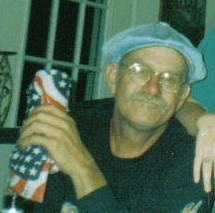
b: 1950
Jim David Adkisson
Summary
Name:
Years Active:
2008Birth:
June 25, 1950Status:
ImprisonedClass:
Mass MurdererVictims:
2Method:
ShootingNationality:
USA
b: 1950
Jim David Adkisson
Summary: Mass Murderer
Name:
Jim David AdkissonStatus:
ImprisonedVictims:
2Method:
ShootingNationality:
USABirth:
June 25, 1950Years Active:
2008Date Convicted:
February 9, 2009bio
Jim David Adkisson was born on June 25, 1950. He served in the U.S. Army from 1974 to 1977. In the years before the crime he struggled with chronic unemployment and economic instability; his personal history also included substance‑abuse problems and periods of depression and mounting grievance. Over roughly the decade prior to the 2008 attack, Adkisson’s private writings and interviews later revealed an increasing fixation on politics and culture wars. He came to view political and social liberalism — and institutions and groups he associated with liberal causes — as responsible for his own misfortunes. Those grievances became entwined with racist and homophobic language in his private manifesto, and with a belief that violent action against liberals would serve a political purpose. One of his former marriages linked him indirectly to the victim community: a former wife had been a member of the Tennessee Valley Unitarian Universalist Church in the 1990s, which Adkisson later cited when explaining why that congregation was a target.

murder story
On July 27, 2008, Jim David Adkisson entered the Tennessee Valley Unitarian Universalist Church (TVUUC) in Knoxville, Tennessee, carrying a sawed‑off shotgun hidden inside a guitar case. During a potluck event he opened fire on the congregation, killing two people and wounding six others. The victims killed included Greg McKendry and Linda Kraeger (the church later renamed the fellowship hall and library to honor them). Church members and bystanders subdued Adkisson and he was arrested at the scene; he told investigators he intended to keep shooting until police arrived and expected to be killed by law enforcement.
Investigators quickly discovered a handwritten manifesto and other writings in which Adkisson explained his motive: he identified himself as vehemently opposed to Democrats, liberal political views, homosexuals and non‑white people, and he described the church as a symbol of the “liberal” institutions he blamed for his personal and national grievances. The manifesto named national political figures and conservative targets, and included explicitly racist and homophobic language. Adkisson also referenced contemporary political debates — including disparaging comments about the 2008 Democratic presidential candidate — tying his grievance to the national political moment.
Forensic and material evidence established planning and premeditation. Adkisson had purchased the shotgun about a month before the attack, shortened the barrel at home, and bought the guitar case used to conceal it days before the shooting. He carried additional ammunition and a satchel with 76 shells of #4 shot. After the attack, the church and the wider Unitarian Universalist community mobilized: congregational trauma teams assisted survivors, vigils and memorials were held, and the denomination created relief funds and public statements.
Legally, Adkisson waived a preliminary hearing to speed proceedings and to obtain a mental‑health evaluation. Defense counsel explored the possibility of an insanity defense, but ultimately Adkisson and his lawyers announced that he would plead guilty. On February 9, 2009, after being found competent to plead, he entered a plea of guilty to two counts of murder and multiple counts of attempted murder and was sentenced to life imprisonment without the possibility of parole. In court he refused to address the congregation before sentencing.